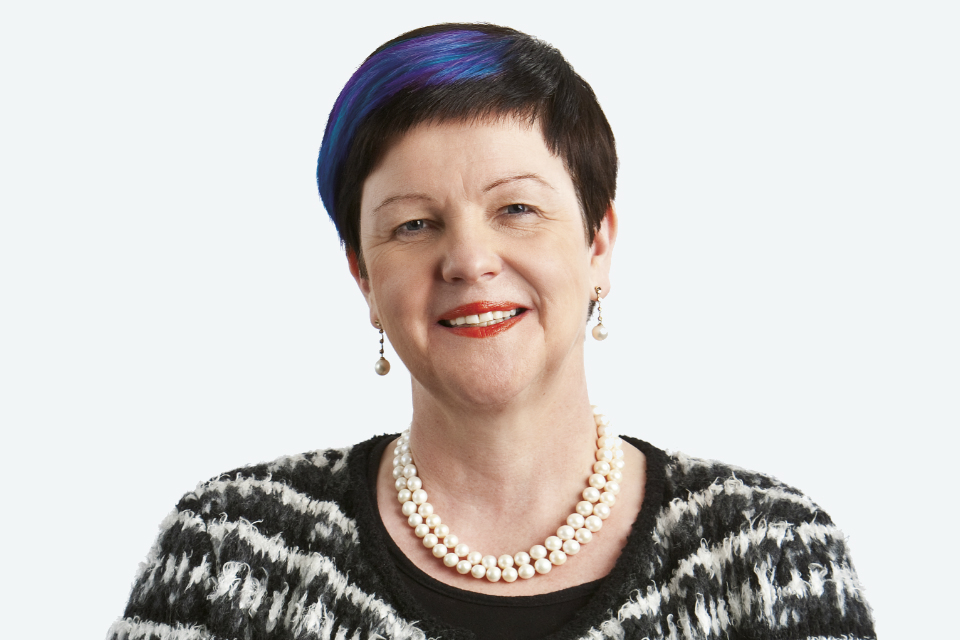Digital health: transforming healthcare service delivery
The importance and benefits of digital health - part of the UK government’s programme of events to celebrate the Commonwealth Games.

Ladies and gentlemen. It is my pleasure to be here today, to welcome you to Glasgow, to the Commonwealth Games, to the British Business House here at the magnificent Glasgow City Chambers, and to this important meeting on digital health.
I am Lucy Neville-Rolfe since last Friday the Minister for Intellectual Property. I have spent the last 17 years in business and am passionate about innovation and adapting to the digital economy. You will appreciate, however, that I am climbing a steep learning curve as a government minister. Please make allowances accordingly!
We have with us today some very eminent speakers:
- Professor George Crooks, Medical Director of NHS 24 here in Scotland, will be providing you with an overview of digital health in the UK
- representatives of the WHO, the International Telecommunications Union, GSK, Bupa and Public Health England will then introduce an important new global initiative
- Mr Paul Madden, Chief Information Officer of the Australian Department of Health, will set out how technology is transforming health services in Australia
There will be time for questions and our final 30 minutes will be given over to a round table discussion.
My thanks at the outset to The Phoenix Partnership for sponsoring the session, to all of you for coming and to Healthcare UK for organising it.
We are here to discuss an exciting set of opportunities.
Modern medicine is the result of worldwide innovations in technology, treatment and ways of working. It is the diffusion of these innovations that represents our greatest hope of surmounting the challenges that all health systems face.
Across the Commonwealth, the enormous economic expansion of recent decades has brought huge challenges, notably the rise of non-communicable diseases, ageing populations and ever increasing patient expectations. We must aim to provide the same high quality care to those in sparsely populated regions as in urban centres.
Digital health, encompassing telehealth, e-health, m-health, and communications is one key to making progress.
These will allow:
- technologies that can be worn on the body and installed at home to keep patients out of hospitals and empower them to take control of their health
- technologies that give clinicians, managers, and researchers the tools they need to deliver care, and develop more effective treatments
- technologies that make health systems more efficient, by ensuring the seamless transfer and analysis of vital information
The organisations in this room embody all of these things. Many of them are from the UK.
I am pleased to say that the Intellectual Property Office has funded a number of collaborative hospital-university projects through their Fast Forward Competition, with a number of these projects focussing on telehealth solutions.
We are proud of the UK’s record in discovery, invention and delivery and that we are home to 3 of the top 4 universities globally for health, clinical and pre-clinical studies.
Digital health has some surprisingly simple and elegant applications that can be real drivers of improvements in how healthcare is delivered.
A great example of the potential of digital health was revealed within the headline findings from the recent Whole System Demonstrator (WSD) programme. These findings indicated that telehealth – if used correctly – could deliver amongst other things a 20% reduction in emergency admissions and a 45% reduction in mortality rates.
Other studies have revealed how electronic prescriptions reduce total prescription error rates by 60%. There is a wealth of other examples of how the delivery of care is being transformed through digital health.
The Royal National Orthopaedic Hospital has trialled a system where spinal surgery patients recorded post-operative progress on an iPad in hospital and from home. It is thought that this created the capacity for 300 new outpatient appointments per consultant surgeon annually.
Here in Scotland, NHS Greater Glasgow and Clyde’s clinical portal has some 10,000 healthcare professionals using the system, to nearly eliminate the need to request paper case notes when seeing emergency patients.
Our government has set out a vision for the NHS to go paperless by 2018, and for staff to share data more effectively. By March 2015, patients will be able to access their GP record online, book appointments and order repeat prescriptions.
This strength is underpinned by a strong regulatory infrastructure. Organisations such as Public Health England and the National Institute for Health and Care Excellence (NICE), are key to creating a safe and sustainable health system.
The result is a health service that, according to a recent (June 2014) report by the Commonwealth Fund, is the most efficient healthcare in the world partly due to its adoption of information technology.
But there is much that we can learn from the experience of other nations:
In British Columbia, thoracic surgeons are providing telehealth-based care for 30% of their patients resulting in consultations with more than 8,000 patients in 1,700 clinics, saving 6 million kilometers of patient travel.
Launched by students at the University of Melbourne, a smartphone stethoscope allows lay users to detect, alert and advise those with childhood pneumonia, with the potential to save up to millions of lives a year worldwide.
DrishtiCare is a highly successful web-based platform launched in Hyderabad, India for the screening and medical referral of people suffering from vision-threatening diabetic retinopathy, the leading cause of blindness in urban populations.
International collaboration can ensure rapid dissemination of good ideas and multiply the benefits to mankind. This is why we are always looking for ways to link up what we do at home with our overseas partners. That is why we are here today.